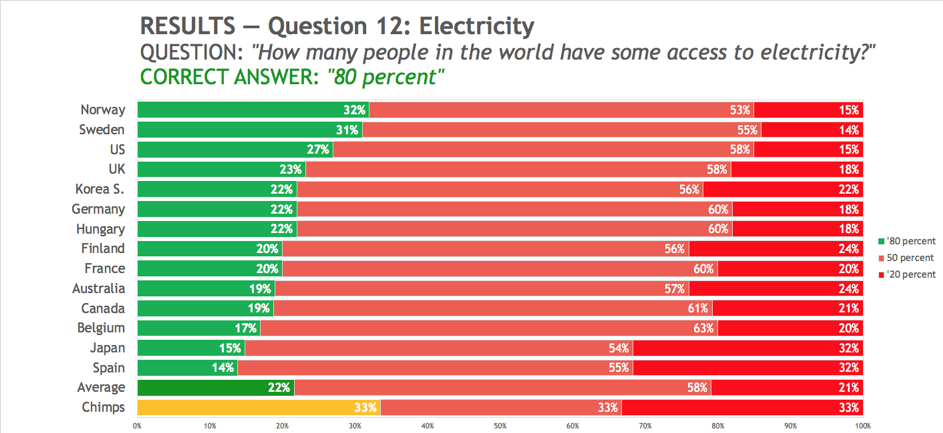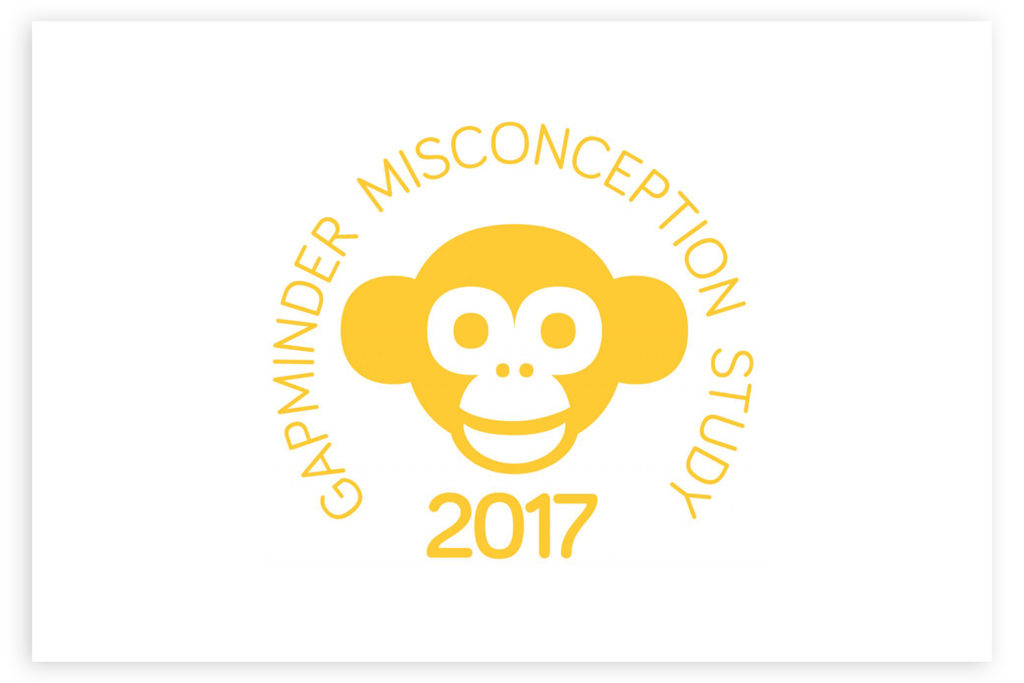 10%
10% 35%
35% 60%
60%
Correct answer
Many low income countries became middle income countries
Thirty years ago 45 countries had average incomes so low they were called “low income countries” by the World Bank. Since then 24 of them have reached middle income level. Back in 1998 their combined population was 2.6 billion people, and today its 3.9 billion people, which are now counted as citizens of “Middle Income countries”, because their average incomes are much higher now.

Of course, not everyone got richer. But looking at the number of people on different incomes a vast majority moved up to much higher living standards. Among those 24 countries the number of people in extreme poverty, below 1.9$/ day was roughly 1.8 billion, 30 years ago. Today they are roughly 0.2 billion. This means 1.6 billion less in extreme poverty: 0.8 less in China, 0.5 less in India, 0.2 in the rest of Asia. But in the African countries that became “middle income” (like Nigeria), the people in extreme poverty actually increased, from a total of 70 million to 100 million, roughly. In some of these countries the rate of extreme poverty still declined, because the total population increased so much.
Data source: World Bank income levels & the UN World Population Prospects 2019
The ignorance we found

Why do people pick the wrong answer?
MISCONCEPTION: Once a “low income country” always…
The bad habit to put labels (like developing countries or low-income countries) make it seem like their destiny is settled and they will always stay poor. WRONG! Many of the countries that used to be on “low income level” in 1998, had the fastest economic growth in the world and are now on “middle income level”. Like a race track, it’s better to label the different labels, than labelling the countries.








